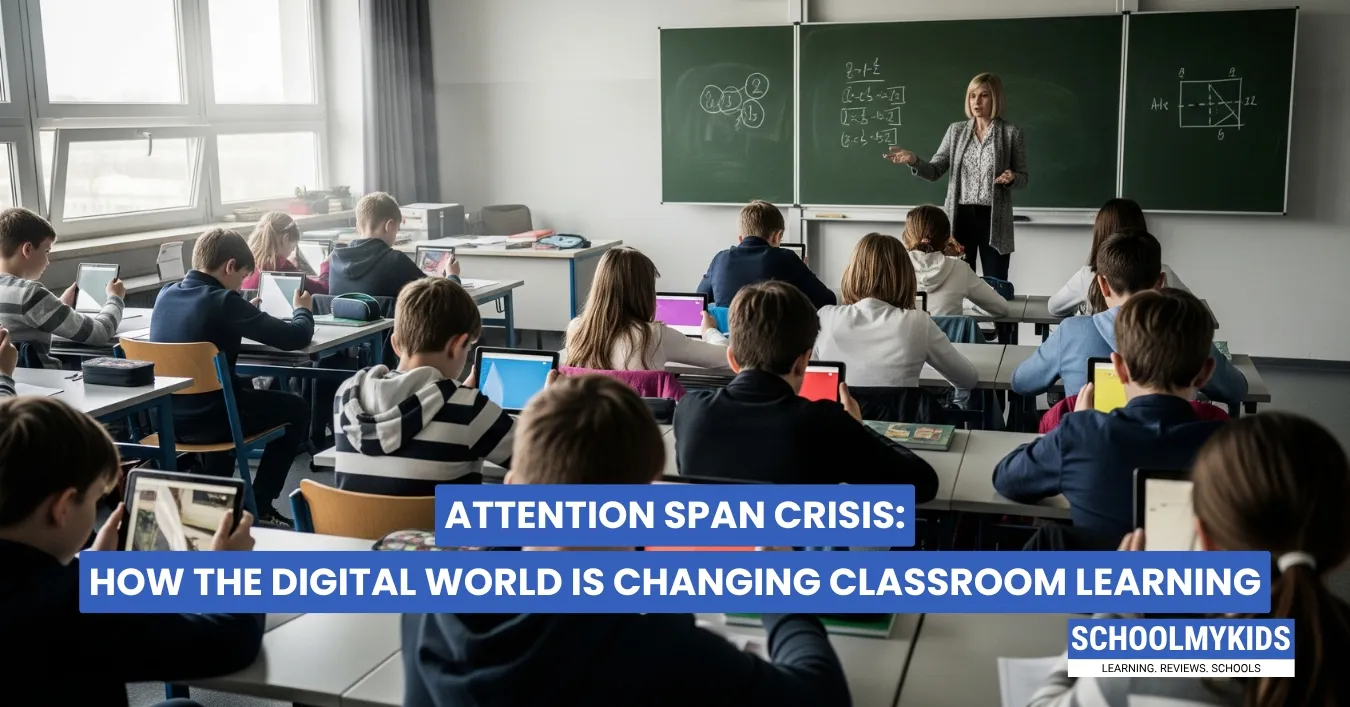You're sitting in your bedroom, homework spread out on your desk. Your math textbook is open, but your phone is buzzing with notifications. Instagram. Snapchat. TikTok. WhatsApp. Each buzz feels like it's calling your name. You tell yourself you'll just check one message, but thirty minutes later, you're still scrolling through videos of people you don't even know.
Sound familiar?
Now think about yesterday in class. Your teacher was explaining something important, maybe about the causes of climate change or how to solve quadratic equations. But your mind kept wandering. You found yourself staring at the clock, tapping your pen, thinking about that funny video you saw this morning. Even when you tried to focus, it felt like your brain was fighting against you.
You're not broken. Your brain isn't defective. But something fundamental is happening to how an entire generation pays attention, and it's turning classrooms into battle zones between students and their own minds.
Be honest with yourself for a moment. How many times have you already thought about checking your phone since you started reading this? If you're like most students today, the answer is probably "at least three times." And we're not even done with the introduction yet.
This isn't just about you having "no self-control" or being "addicted to your phone." This is about how the digital world has literally rewired your brain, and why sitting still in a classroom for 45 minutes now feels like torture when it didn't used to be this hard for previous generations.
Your Brain on Digital Overdrive
Every time you get a notification, your brain gets a tiny hit of dopamine, the same chemical that makes you feel good. Your brain loves this feeling so much that it starts craving it constantly.
Think about your daily digital routine. You wake up and immediately grab your phone. You scroll through Instagram, switch to TikTok, check Snapchat, maybe browse YouTube, then jump to WhatsApp. All within the first hour of your day. Your brain is getting used to switching between different types of content every few seconds.
Now imagine sitting in a history class where your teacher is explaining World War II for 45 minutes straight. No quick cuts. No background music. No immediate rewards. Your brain, trained for constant stimulation, starts getting restless. It's like asking someone who's used to sprinting to suddenly walk in slow motion.
The Classroom Struggle is Real
Teachers everywhere are noticing the same thing. Students who can sit through a movie at home can't focus on a 20-minute lesson. Kids who can memorize every detail of their favorite video game forget what was taught yesterday.
This isn't about being "good" or "bad" at school. Your brain has literally been rewired by digital habits. When you're used to getting instant gratification every few seconds, waiting for a teacher to explain a concept feels painfully slow.
The symptoms are everywhere:
- You find yourself checking the time every few minutes during class
- Your leg bounces uncontrollably when you're supposed to sit still
- You can read the same paragraph three times and still not remember what it said
- You feel anxious when you can't check your phone for more than an hour
- You need background noise or music to concentrate on homework
Why This Matters More Than You Think
This attention crisis isn't just making school harder; it's affecting how you learn and think. When your brain gets used to jumping between tasks quickly, you lose the ability to think deeply about complex problems.
Real learning happens when you can focus on something long enough to truly understand it. When you rush through math problems to get back to your phone, you're not building the mental muscles needed for advanced thinking. When you half-listen to your science teacher while mentally planning your next Instagram story, you miss the connections that make learning stick.
The scariest part? Many students don't even realize this is happening. They think they're multitasking like champions, but research shows our brains can't actually multitask. We're just switching focus rapidly, and each switch makes us a little less effective.
The Modern Learning Dilemma
We can't just throw away all our devices. Half of your education happens on screens now. You submit assignments online, watch educational videos, use learning apps, and participate in smart classroom activities. Even your textbooks are often digital.
The solution isn't to go back to the Stone Age. It's to develop a healthier relationship with technology that helps rather than hurts your learning.
Taking Back Control
The good news? You can retrain your brain. Just like it learned to crave constant stimulation, it can learn to focus deeply again. But it takes practice and patience.
- Start small: Try reading for just 15 minutes without checking your phone. When your brain gets antsy (and it will), acknowledge the feeling but don't give in. Gradually increase this time. It's like building a muscle – the more you exercise your focus, the stronger it gets.
- Create phone-free zones during homework time: Put your device in another room. The physical distance helps break the automatic reach for your phone.
- Practice single-tasking: When you're doing math homework, just do math. When you're in English class, just focus on English. Your brain will resist at first, but stick with it.
Conclusion
Every moment you spend building your attention span is an investment in your future. The students who learn to focus more will be the ones who excel in college, solve complex problems in their careers, and actually enjoy learning new things throughout their lives.
The digital world isn't going anywhere, but you can choose how it affects your brain. You have more control than you think. The question is: are you willing to use it?
Your education, your future career, and your ability to think clearly all depend on the choices you make today about your attention.









Be the first one to comment on this story.